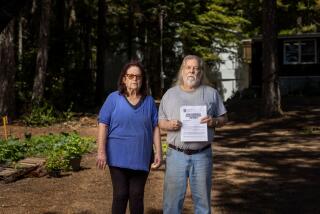Before you buy or sell: a thorough going-over
Here are some of the types of inspections available to home buyers and sellers:
The home inspection: The cost can vary from as little as $200 for smaller homes to $300 to $400 for homes of 1,500 to 2,000 square feet.
Prices for larger homes and those located on hillsides will be higher, as they require more time to inspect.
Inspectors will spend about half a day — including writing a report — evaluating a home’s foundation, exterior and interior wall surfaces, roofing, plumbing, electrical systems, heating and air conditioning, built-in appliances, garage area and the general area outside the home.
“We look at everything we think is going to affect the building and anything within six feet of the structure,” said George Harper, chairman of the California Real Estate Inspection Assn. When necessary, an inspector will recommend that other experts be brought in to examine areas such as the landscaping or soil in greater detail.
The landscape inspection: Depending on the landscape architect used and the complexity of a home prices vary, but generally, it can cost from $200 to $1,000 or more. The architects evaluate the landscape area of a home, including irrigation, water drainage, the placement of retaining walls, the grading and slope of patios and the placement and health of trees, as well as planted flowers and shrubbery.
The geological inspection: There are two types of reports generated by a geological inspection, according to George Dunfield of the California Board for Geologists and Geophysicists. The first, which is required during the disclosure process of escrow, is called the natural hazard disclosure. The report costs about $75 to $100 and includes a search of maps in the area to identify earthquake faults and landslide surveys.
The second is a geologic environmental site assessment, and runs $600 to $1,200. This optional report looks at soil quality and the potential for contaminated releases, such as fuels and solvents, from any of California’s more than 34,000 underground storage tanks.
The report also takes a more in-depth look at the potential for impact of fault lines and landslides.
— Allison B. Cohen
More to Read
Sign up for Essential California
The most important California stories and recommendations in your inbox every morning.
You may occasionally receive promotional content from the Los Angeles Times.






